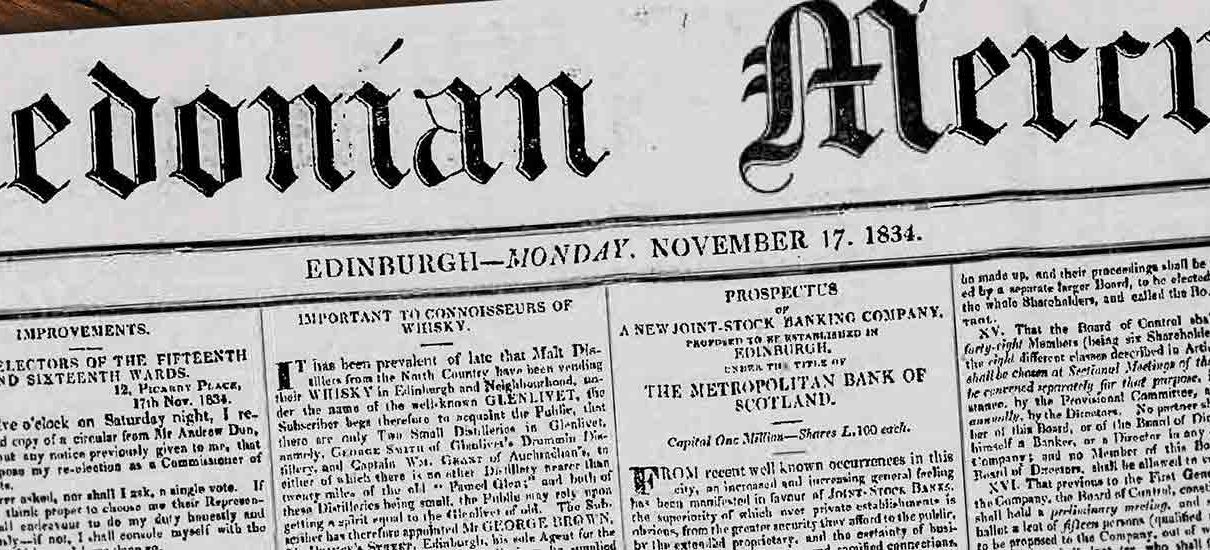
Ten years ago, Chris Brousseau was a biologist for the Canadian government – a long way away from the rugged landscape of Speyside. However, the whisky aficionado had ambitions that reached far beyond drinking the occasional dram. In August 2008 he arrived in Scotland looking to turn his passion into a career. Within three days he had a job at The Glenlivet’s distillery.
As the company’s official archivist he now curates nearly 200 years’ worth of history on the single malt that started it all.
Chris says: “I arrived on a Saturday in August and by Monday morning I had a part-time job as a tour guide here. I just rang up and asked! At The Glenlivet, we are proud of our heritage: everything we do is about heritage and our people.”
“It’s only been the last few years when the archive really developed. If you were here five years ago it was quite a different spot – just rows of shelving.”
In fact, adding pieces to the collection is another one of Chris’s tasks and he regularly scours the far reaches of the internet to add to the growing collection of items that document The Glenlivet’s history such Charles Dickens’ letter.
With such a rich collection of artefacts it’s no easy task, but here are Chris’ most unusual finds in The Glenlivet archive:
THE GLENLIVET INDENTURE
The Indenture is an agreement signed in 1884 by all the local Speyside distillers that states, once and for all, that The Glenlivet is the only whisky to legally use that official moniker.
Chris says: “The bottom line says there can be only one The Glenlivet whisky, but other distillers can use ‘Glenlivet’ in the name. This is what sets The Glenlivet apart from all other whiskies. This is probably the most important thing in terms of intelligent property. This was in a shopping bag, on the shelf. We opened it up and went ‘Oh my God!’ That’s why it’s a bit creased.”
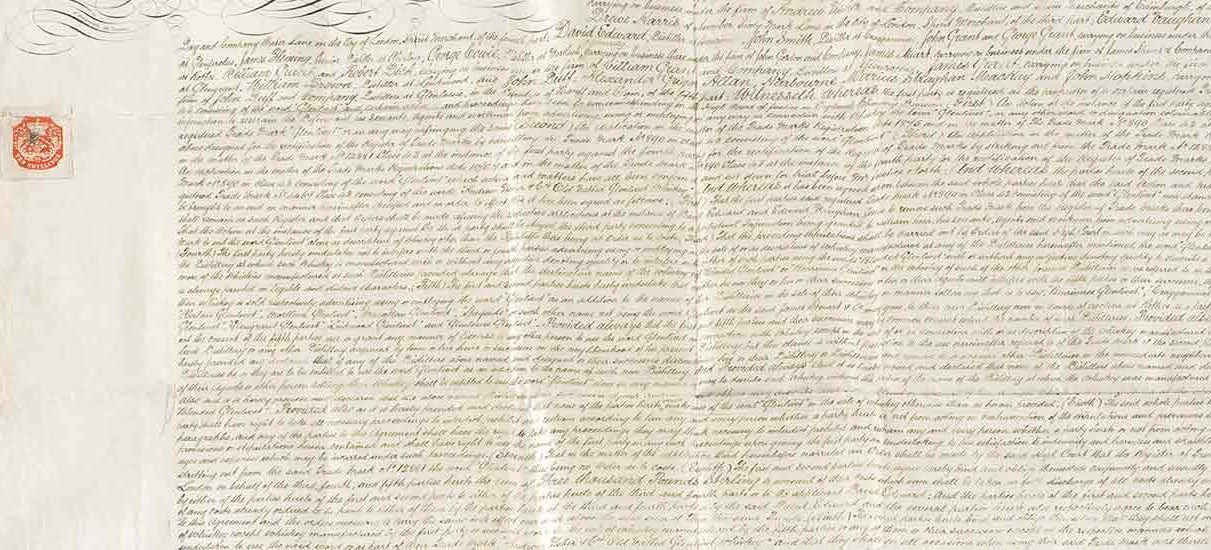
The Glenlivet Indenture
BRIEFCASE AND UNIFORM – COL GEORGE SMITH GRANT 1845-1911. NEPHEW OF COL JOHN GORDON SMITH
Stored in a metal case among the archives, Chris has the exact uniform that Col George Smith Grant – the third owner of The Glenlivet distillery – wore in his painted portrait. It is proudly displayed in the Guardians Library at The Glenlivet distillery.
Chris explains: “This is the military uniform of Col George Smith Grant. It’s an officer’s dress uniform of the Gordon Highlanders [a line infantry regiment of the British Army that existed for 113 years, from 1881 until 1994].
“We had the clothing in an old Gordon Highlanders’ uniform trunk for a long time and then sent it away to get restored last year. They had to freeze it for about six months to kill bacteria. We have the hat, the hat box to preserve it and the dress plume that would have been used as decoration. It’s likely to be goose quills, looking at the size of them.
“I have to say, it was in reasonable shape seeing as it’s 120 years old and it was in a metal box for 100 years! When we opened the box, we found newspapers that were from the early 1900s.”
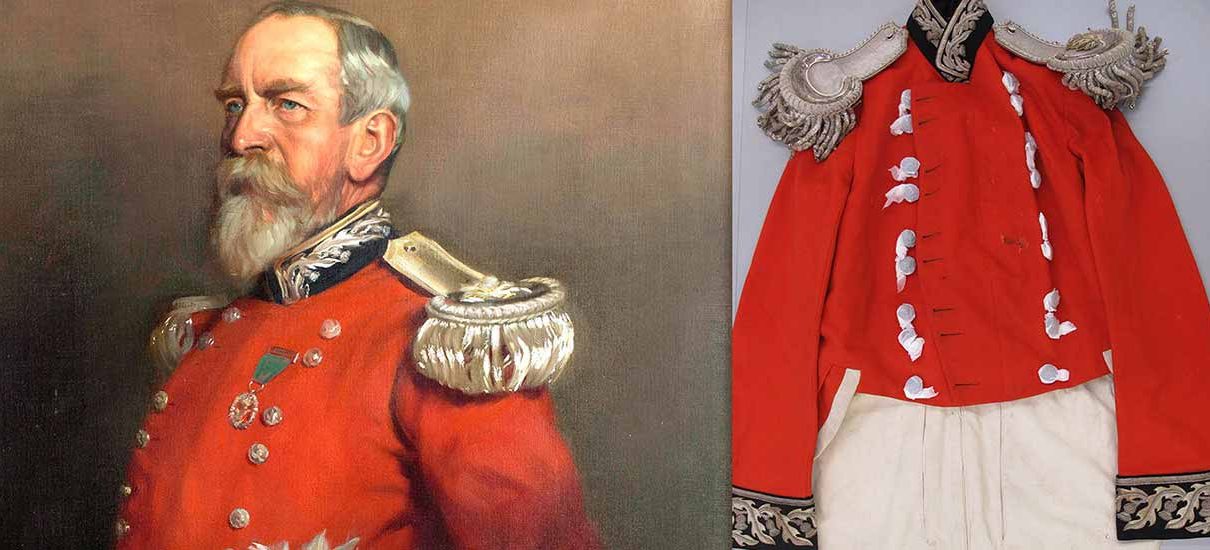
Briefcase and Uniform
BOTTLE FROM THE MUMMY
The Glenlivet has often had a starring role on the silver screen. Our famous Speyside whisky has appeared in films such as Anchorman, Grosse Pointe Blank, Birdcage and The Mummy.
Holding the bottle from the 1997 film The Mummy, Chris says: “You can see it in the film. They’re sitting round the campfire and they’re drinking from this bottle. The production company worked with the archive team to create an historically accurate replica of the bottle.”
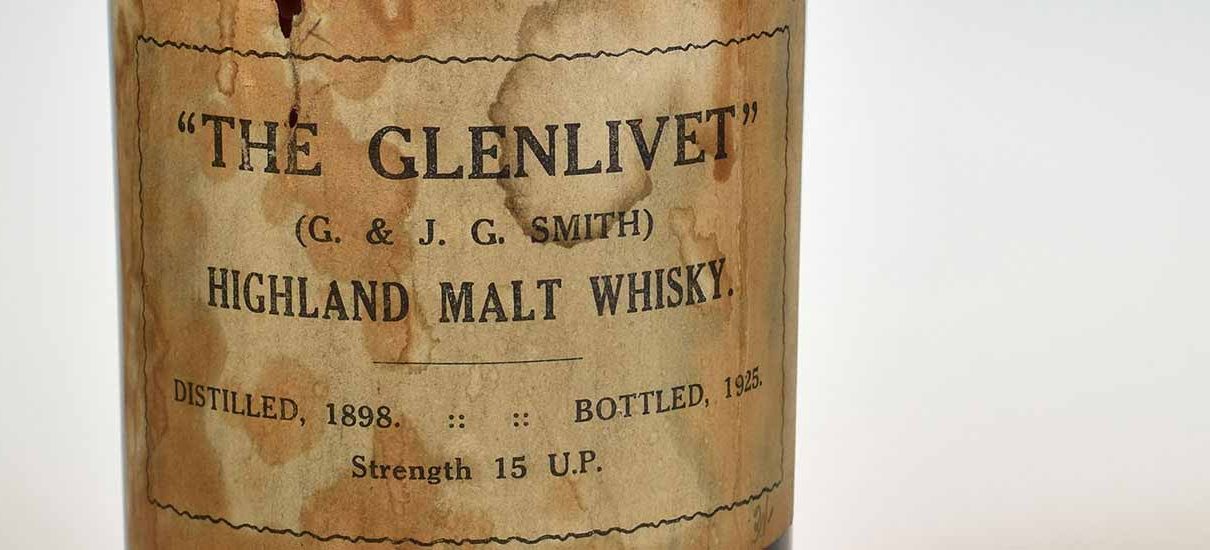
Bottle from the Mummy
THE OBITUARIES OF GEORGE SMITH
Following our founder George Smith’s death in 1871, the obituaries that are recorded in the archive tell of his strong character and importance within the Speyside community.
Chris says: “The obituaries show how generous and kind George was, as well as being very determined and strong-willed. They are almost like biographies written for him. They are really good in describing his personality. There are hardly any ‘hard facts’ in there like you get in modern obituaries – they are all about the depth of his character. To have these style of obituaries written about him after he died… he must have been quite a person. They are a real tribute to George.”
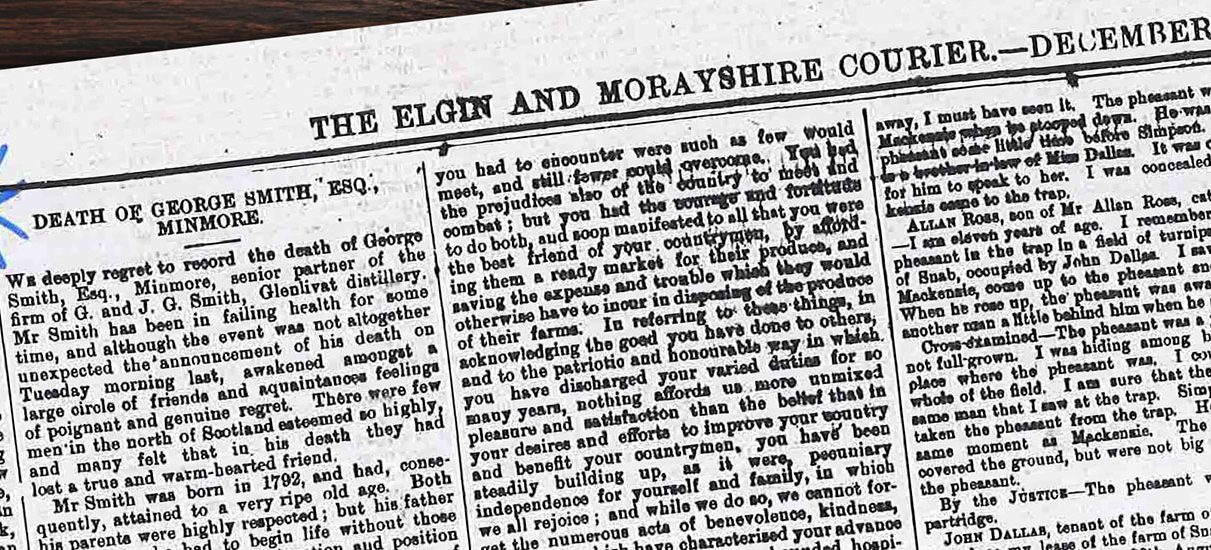
The Obituaries of George Smith
EARLY ADVERTISING
Nestled in the archives is a newspaper clipping from The Caledonian Mercury in 1834, in which George Smith writes a front-page piece that he believed was “important to connoisseurs of whisky”.
Chris says: “We’ve got many newspaper cuttings and clippings in the archive. This one from 1834 shows George Smith himself saying that people are starting to copy his whisky. He basically says on the front page: ‘Don’t copy my whisky!’ It’s worth noting that it’s actually another 50 years until they had the Indenture.”
